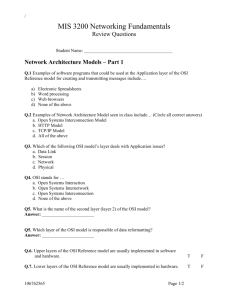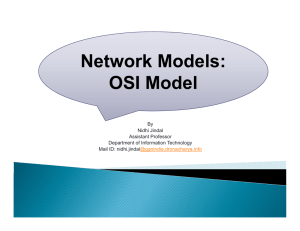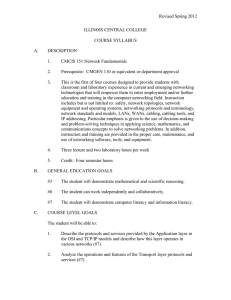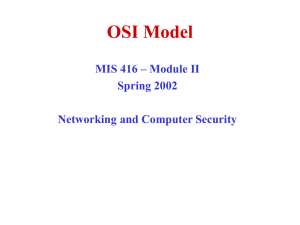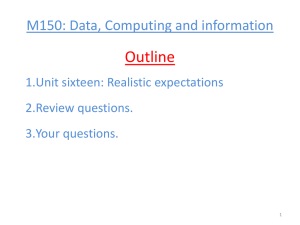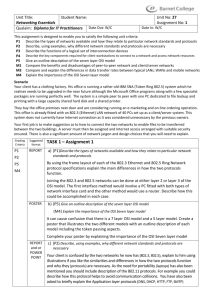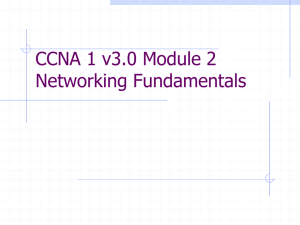Modbus Data Gateway
advertisement
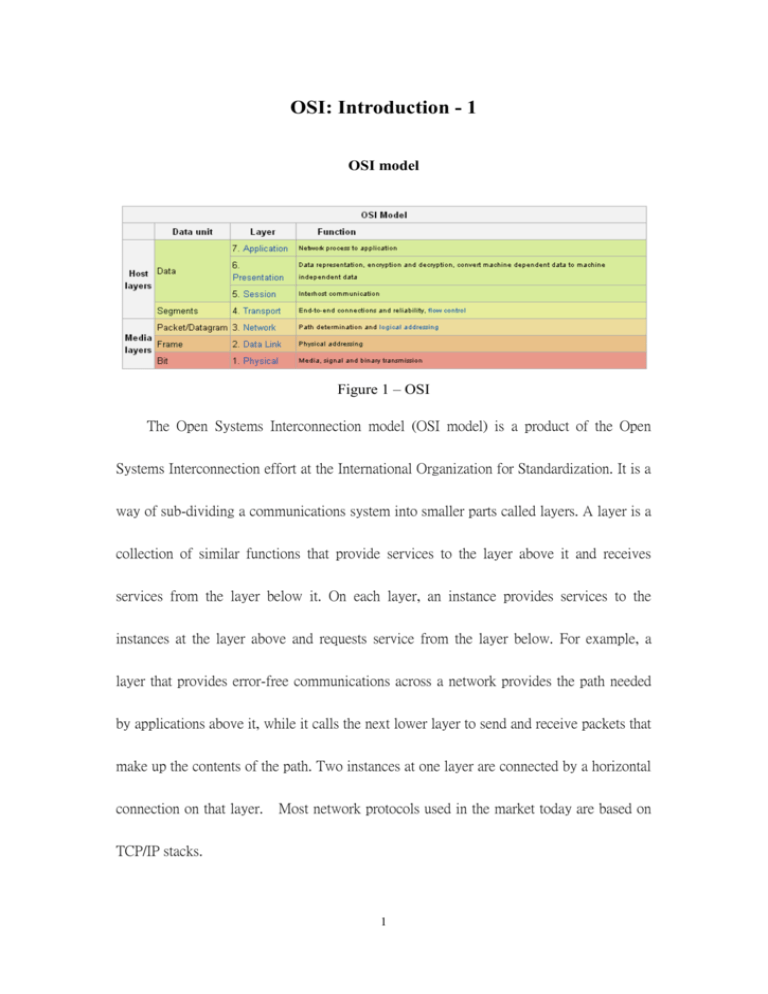
OSI: Introduction - 1 OSI model Figure 1 – OSI The Open Systems Interconnection model (OSI model) is a product of the Open Systems Interconnection effort at the International Organization for Standardization. It is a way of sub-dividing a communications system into smaller parts called layers. A layer is a collection of similar functions that provide services to the layer above it and receives services from the layer below it. On each layer, an instance provides services to the instances at the layer above and requests service from the layer below. For example, a layer that provides error-free communications across a network provides the path needed by applications above it, while it calls the next lower layer to send and receive packets that make up the contents of the path. Two instances at one layer are connected by a horizontal connection on that layer. Most network protocols used in the market today are based on TCP/IP stacks. 1 Figure 2 – OSI History Work on a layered model of network architecture was started and the International Organization for Standardization (ISO) began to develop its OSI framework architecture. OSI has two major components: an abstract model of networking, called the Basic Reference Model or seven-layer model, and a set of specific protocols. The concept of a 7 layer model was provided by the work of Charles Bachman, Honeywell Information Services. Various aspects of OSI design evolved from experiences with the ARPANET, the fledgling Internet, NPLNET, EIN, CYCLADES network and the work in IFIP WG6.1. The new design was documented in ISO 7498 and its various addenda. In this model, a networking system is divided into layers. Within each layer, one 2 or more entities implement its functionality. Each entity interacts directly only with the layer immediately beneath it, and provides facilities for use by the layer above it. Protocols enable an entity in one host to interact with a corresponding entity at the same layer in another host. Service definitions abstractly describe the functionality provided to an (N)-layer by an (N-1) layer, where N is one of the seven layers of protocols operating in the local host. 3




